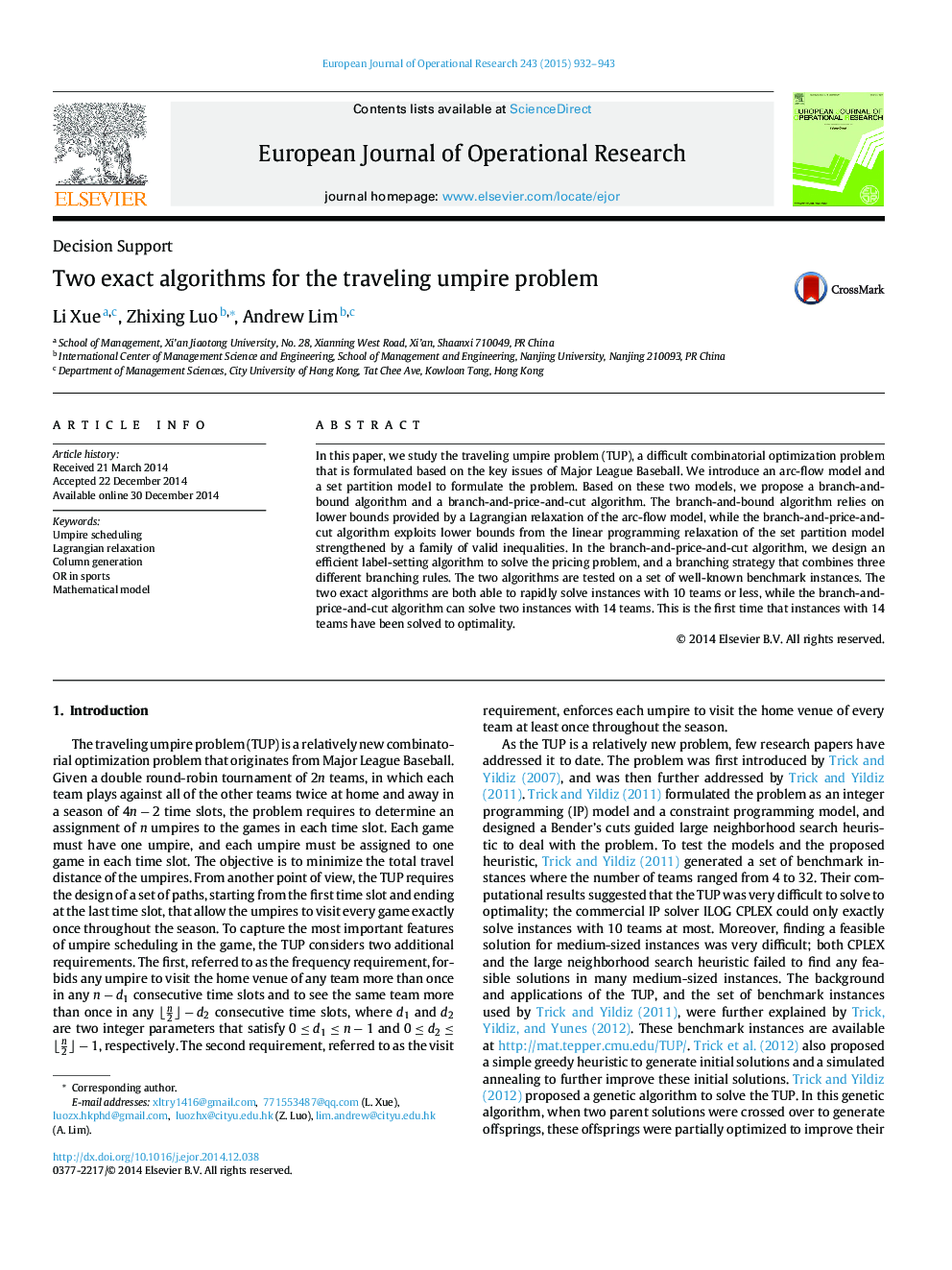| کد مقاله | کد نشریه | سال انتشار | مقاله انگلیسی | نسخه تمام متن |
|---|---|---|---|---|
| 478061 | 1446006 | 2015 | 12 صفحه PDF | دانلود رایگان |
• Formulated the TUP into two mixed integer programming models.
• Proposed two exact algorithms to solve the problem.
• Our models yielded stronger lower bounds than the previous in the literature.
• One algorithm solved two instances with 14 teams to optimal for the first time.
• New lower bounds and optimal solutions served as reference for future researchers.
In this paper, we study the traveling umpire problem (TUP), a difficult combinatorial optimization problem that is formulated based on the key issues of Major League Baseball. We introduce an arc-flow model and a set partition model to formulate the problem. Based on these two models, we propose a branch-and-bound algorithm and a branch-and-price-and-cut algorithm. The branch-and-bound algorithm relies on lower bounds provided by a Lagrangian relaxation of the arc-flow model, while the branch-and-price-and-cut algorithm exploits lower bounds from the linear programming relaxation of the set partition model strengthened by a family of valid inequalities. In the branch-and-price-and-cut algorithm, we design an efficient label-setting algorithm to solve the pricing problem, and a branching strategy that combines three different branching rules. The two algorithms are tested on a set of well-known benchmark instances. The two exact algorithms are both able to rapidly solve instances with 10 teams or less, while the branch-and-price-and-cut algorithm can solve two instances with 14 teams. This is the first time that instances with 14 teams have been solved to optimality.
Journal: European Journal of Operational Research - Volume 243, Issue 3, 16 June 2015, Pages 932–943
